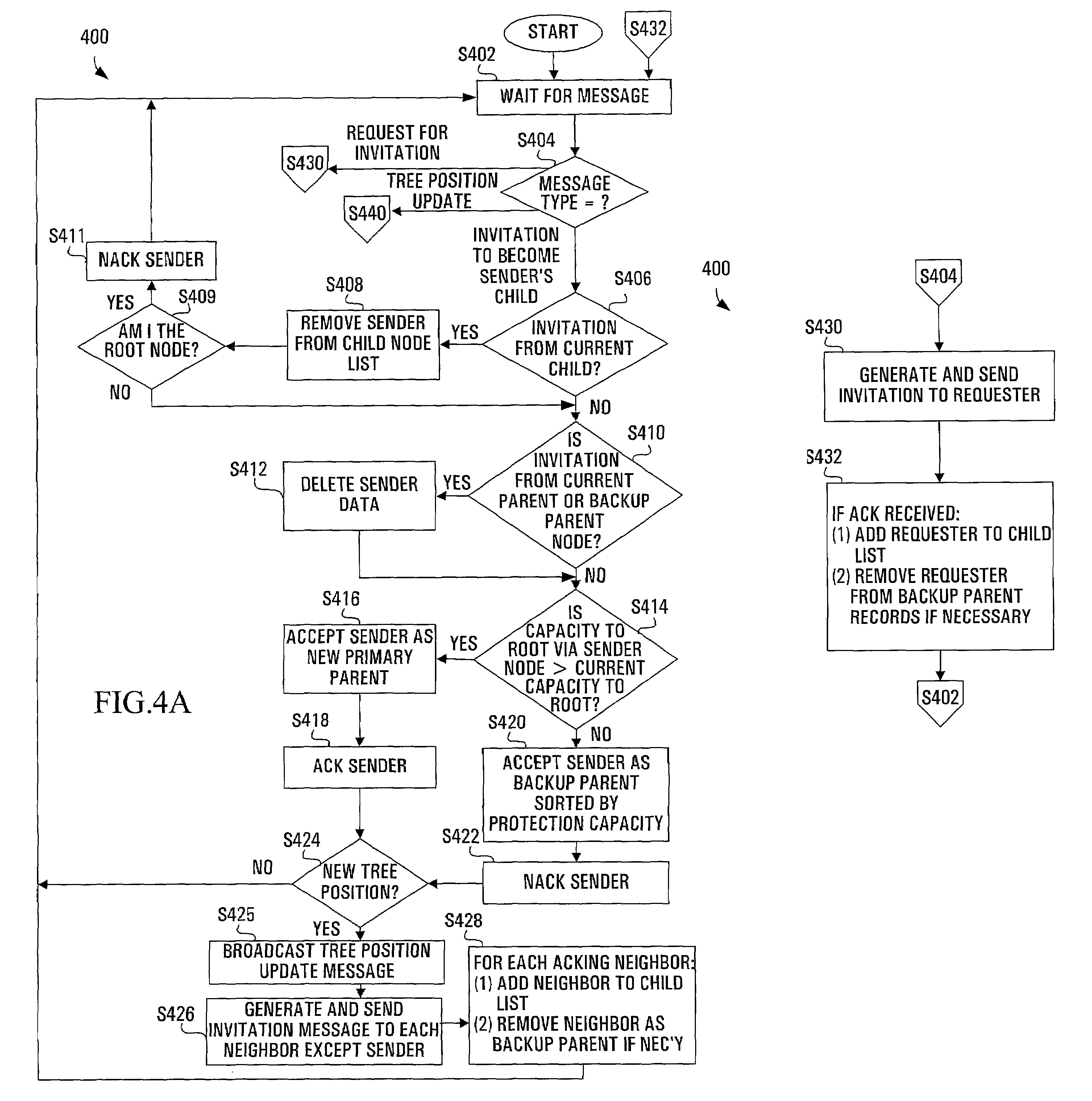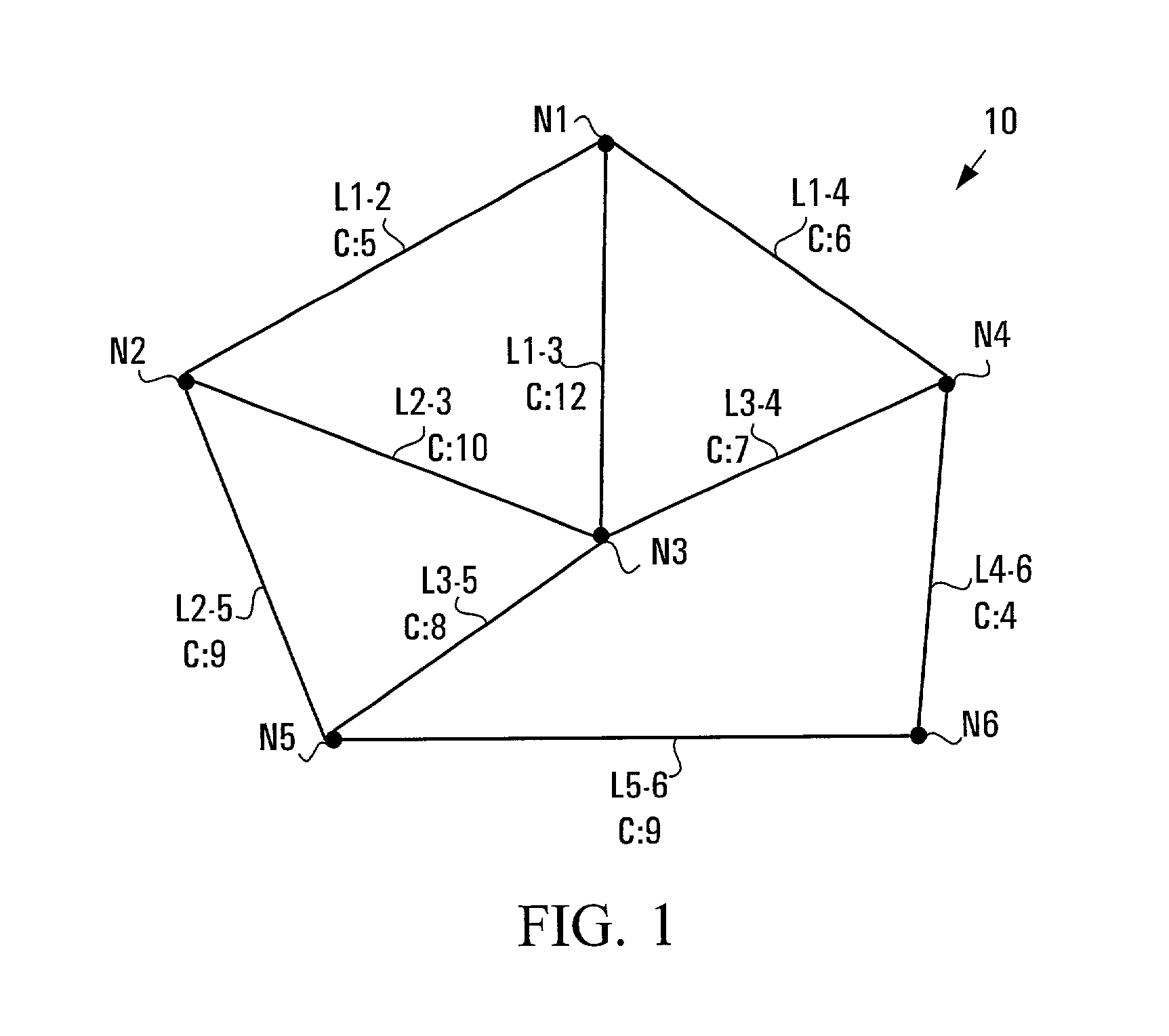Hierarchical tree-based protection scheme for mesh networks
a protection scheme and hierarchy tree technology, applied in the field of network protection schemes, can solve the problems of limited dynamic tree reconfiguration in the event of network topology change, and achieve the effect of increasing capacity
- Summary
- Abstract
- Description
- Claims
- Application Information
AI Technical Summary
Benefits of technology
Problems solved by technology
Method used
Image
Examples
Embodiment Construction
[0033]FIG. 1 illustrates an exemplary mesh communications network 10 which implements a hierarchical tree-based protection scheme according to the present invention. The network 10 comprises six nodes N1 to N6 and nine links L1-2, L1-3, L1-4, L2-3, L2-5, L3-4, L3-5, L4-6 and L5-6 interconnecting the six nodes. The network 10 of the present embodiment is a long-haul optical data network; however alternative embodiments may comprise networks of a different scope (e.g. a metro network), may be capable of carrying other signals (e.g. voice), and may comprise a different transmission medium rather than optical fiber (e.g. coaxial cable or twisted pair).
[0034]Each of the nine links L1-2, L1-3, L1-4, L2-3, L2-5, L3-4, L3-5, L4-6 and L5-6 comprises an interconnection between two nodes, which interconnection may comprise a single optical fiber, a bundle of fibers (i.e. a trunk), or a logical interconnection representing more than one physical link for example. The name of the link identifies...
PUM
 Login to View More
Login to View More Abstract
Description
Claims
Application Information
 Login to View More
Login to View More - R&D
- Intellectual Property
- Life Sciences
- Materials
- Tech Scout
- Unparalleled Data Quality
- Higher Quality Content
- 60% Fewer Hallucinations
Browse by: Latest US Patents, China's latest patents, Technical Efficacy Thesaurus, Application Domain, Technology Topic, Popular Technical Reports.
© 2025 PatSnap. All rights reserved.Legal|Privacy policy|Modern Slavery Act Transparency Statement|Sitemap|About US| Contact US: help@patsnap.com



